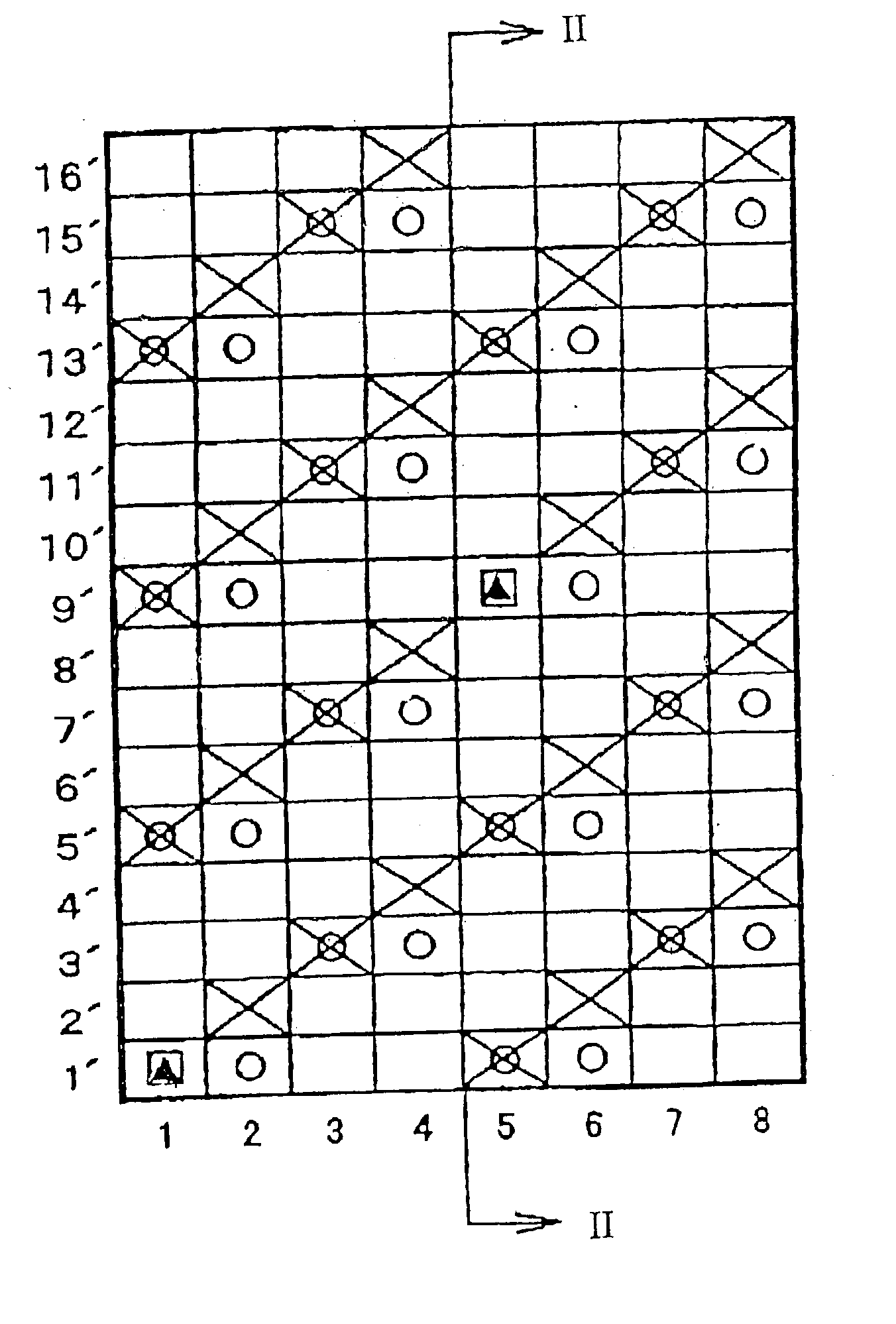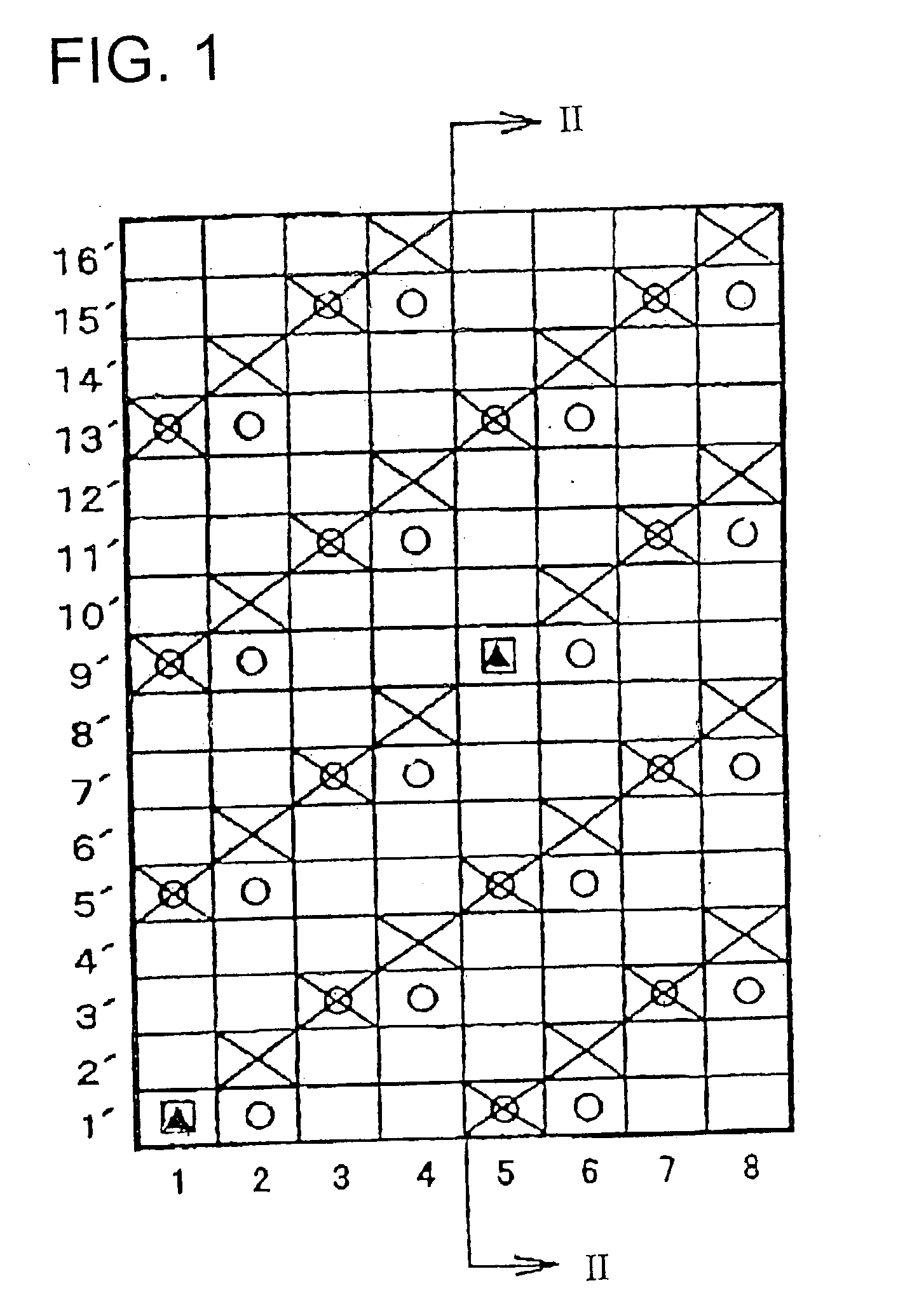Industrial two-layer fabric
a two-layer fabric and fabric technology, applied in the field of industrial two-layer fabric, can solve the problems of fiber carryback and splash, unresolved, opacity and paper strength degradation,
- Summary
- Abstract
- Description
- Claims
- Application Information
AI Technical Summary
Problems solved by technology
Method used
Image
Examples
example 2
[0061] FIG. 3 is a diagram illustrating a repeating unit of Example 2 of the present invention. The placement of warps and wefts is the same as that in Example 1. Lower surface side wefts are placed underneath upper surface side wefts represented by odd numbers, and the upper layer fabric of the repeating unit has 24 wefts. The structures of the upper and lower layer fabrics are the same as those in Example 1. The upper layer fabric has a structure in which an upper surface side warp passes under three adjacent upper surface side wefts and then passes over an upper surface side weft. The lower layer fabric has a plain woven structure in which two adjacent lower surface side warps are formed parallel to each other. Example 2 is different from Example 1 in that while a warp serving as a binding yarn in each layer weaves and binds only one weft in the other layer in Example 1, the repeating unit of Example 2 has binding sites in which a binding portion formed by a warp passing over or ...
example 3
[0068] FIG. 5 is a diagram illustrating a repeating unit of Example 3 of the present invention. The repeating unit of Example 3 comprises 8 warps and 16 wefts. A warp serving as a binding yarn weaves a weft two times in a row so as to form biding portions. The proportion of warps provided as binding yarns is 1 / 2 of all upper surface side warps. An upper surface side warp has a structure that after the warp weaves two times upper surface side wefts from the upper surface side, it goes down to the lower surface side so as to weave two times lower surface side wefts from the lower surface side and then goes up to the upper surface side so as to weave two times upper surface side wefts from the upper surface side. Although the warp 1 / 3 structure of the upper layer fabric is unchanged, the proportion of the warps provided as binding yarns has been increased, so that a binding force has improved and adhesion between the upper and lower layer fabrics has become very good.
example 4
[0069] FIG. 6 is a diagram illustrating a repeating unit of Example 4 of the present invention.
[0070] The repeating unit of Example 4 is similar to but different from Example shown in FIG. 5 in that warps serving as binding yarns are shifted irregularly. The repeating unit of Example 4 has an advantage that diagonal wire marks are not conspicuous since binding portions are not continuous diagonally.
PUM
 Login to View More
Login to View More Abstract
Description
Claims
Application Information
 Login to View More
Login to View More - R&D
- Intellectual Property
- Life Sciences
- Materials
- Tech Scout
- Unparalleled Data Quality
- Higher Quality Content
- 60% Fewer Hallucinations
Browse by: Latest US Patents, China's latest patents, Technical Efficacy Thesaurus, Application Domain, Technology Topic, Popular Technical Reports.
© 2025 PatSnap. All rights reserved.Legal|Privacy policy|Modern Slavery Act Transparency Statement|Sitemap|About US| Contact US: help@patsnap.com



